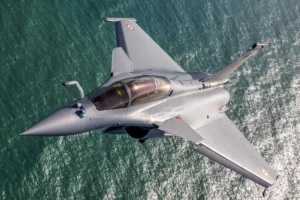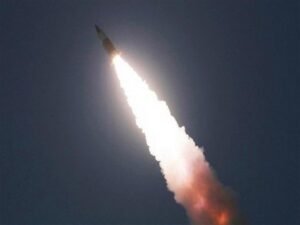
COLOGNE, Germany — Imagine a drone swarm so cunning it can overwhelm any air defense, or an air defense weapon so smart it can see through any drone swarm’s tactics. New investments in military equipment will soon lead to artificial intelligence-powered sniff tests to see how such ideas would perform in the real world.
At least, that’s the promise of a consortium of German startups and defense academics, who say their GhostPlay virtual battlefield offers acquisition officials the chance to game out new features for unmanned systems, counter-drone guns and everything in between in order to identify shortcomings during the design phase.
At the heart of the platform, internally dubbed a metaverse for the Bundeswehr, or German military, lies a kind of supercharged artificial intelligence engine built on self-learning and enhanced autonomy, according to Yvonne Hofstetter, the CEO of 21strategies. The German company, whose proprietary technology is already deployed by traders in the financial industry, leads the GhostPlay project along with local sensor specialist Hensoldt, the Bundeswehr University Hamburg, and Switzerland-based Borchert Consulting and Research.
The German Defence Ministry funded the idea in the course of a €500 million (U.S. $540 million) COVID-19 subsidy package, spread over four years and meant to jolt the country’s high-tech defense research sector into action. Grants are managed through a joint venture of Germany’s two Bundeswehr universities (there is also one in Munich) dubbed dtec.bw.
What sets GhostPlay apart from other military initiatives dabbling in artificial intelligence is its use of “third-wave” algorithms, Hofstetter said in an interview with Defense News, meaning the simulated battlefield actors make decisions that are more “human-like,” with surprises and unpredictability included.
That is compared to “second-wave” AI technologies that essentially behave as supporting acts to humans — optimizing or speeding up decisions instead of coming up with novel courses of action.
GhostPlay programmers say they can create would-be battlefields as digital twins of the real world. For example, if the assignment were to recreate Lithuania for a simulation, coders would fan out to copy the environment “down to the last leaf” using satellite photos and local authorities’ databases on everything from housing, infrastructure and vegetation, Hofstetter said.
Coders can also replicate the performance of enemy weapons, especially former Eastern bloc types, using data from open-source intelligence. That includes characteristics of air defense weapons or seeker technology in missiles.
“There is enough info … kind of scary, really,” said Hofstetter, adding that old military handbooks of the German Democratic Republic have offered a window into warfighting tactics on display today in Russia’s invasion of Ukraine.
And even without data, the GhostPlay engine still serves up veritable foes by way of algorithms constantly fine-tuned via lessons learned in countless simulations.
The physical domain
Researchers have begun toying with the idea of transferring some of the project’s AI decision-making logic to existing military equipment. If successful, that could give legacy systems a new lease on life and surprise adversaries with new capabilities in old kit, said Heiko Borchert of Borchert Consulting,
A paper authored by GhostPlay officials last year states the fire control system of the German Gepard self-propelled anti-aircraft gun, for example, could significantly enhance the target hit rate and increase its own chance of survival when infused with advanced AI algorithms.
The German government has transferred 46 Gepards to Ukraine from the stocks of manufacturer Krauss-Maffei Wegmann. As of Aug. 24, a running online list of Berlin’s military support for Kyiv showed the transfer of six more vehicles was in the works.
No longer used by the Bundeswehr, the weapons reportedly have been instrumental in repelling some Russian missile and drone attacks in Ukraine, including against civilian targets.
In the context of GhostPlay, researchers trained the Gepard to fight a variety of platforms, including Bayraktar TB2 combat UAVs, drone swarms, as well as Russian Ka-52 and Mi-28 attack helicopters.
“Preliminary results suggest that the [simulated Gepard] platform learns very fine-granular engagement tactics for different types of threats and even senses when it’s important to destroy the target or only disable it,” according to the paper.
The platform also learned to optimize its sensor mix to detect targets and prioritize them based on the immediacy of a given threat. For example, the fire control algorithm learned to fire first at weapon-carrying platforms, like helicopters or missile-bearing drones, and engage loitering munitions later.
As for drone swarms, the simulated Gepard shot into what appeared on its radar as singular drone cloud; this thinned out the crowd until sensors were able to recognize tracks for each drone. And when a different, more urgent threat suddenly appeared from a different direction, the system managed to turn its turret and fire while a drone swarm conducted “fancy” maneuvers elsewhere meant to confuse the vehicle’s sensors.
Sebastian Sprenger is associate editor for Europe at Defense News, reporting on the state of the defense market in the region, and on U.S.-Europe cooperation and multi-national investments in defense and global security. Previously he served as managing editor for Defense News. He is based in Cologne, Germany.
Source by [author_name]
#German #militarys #metaverse #promises #virtual #foes #punch








